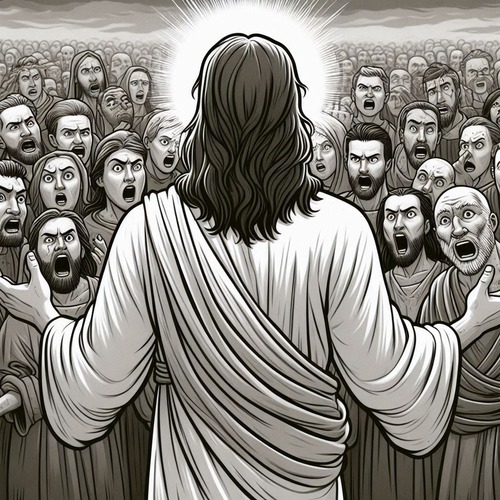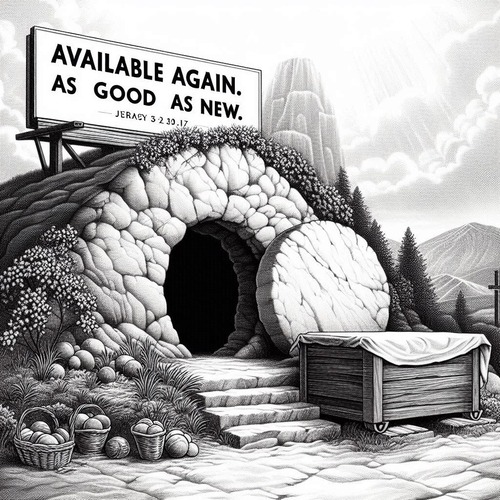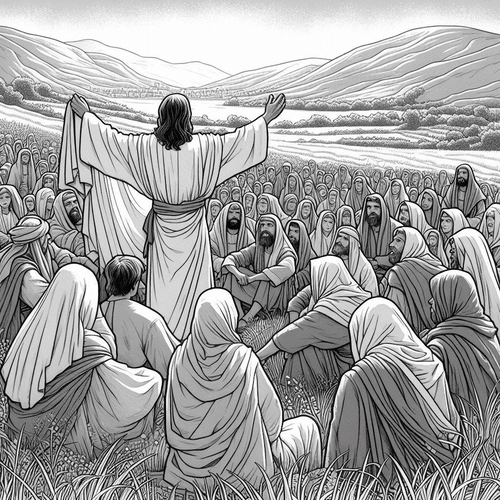Before or During Passover: When Was Jesus Really Crucified?
RESOLVING THE APPARENT CONTRADICTION IN GOSPEL ACCOUNTS
When was Jesus crucified? On comparing the Gospel accounts of Jesus’ final days, we’ve likely noticed what appears to be a glaring contradiction. The Synoptic Gospels (Matthew, Mark, and Luke) clearly describe Jesus eating the Passover meal with His disciples before His crucifixion. Yet John seems to place the crucifixion on Passover preparation day—before the feast even began. Sceptics often point to the apparent discrepancy as evidence the Bible contains irreconcilable errors.
But does this apparent contradiction stand up to careful examination? Not at all. When we consider the historical context, Jewish calendar practices, and the precise language of the texts, we discover not contradiction but harmony in these accounts.
THE APPARENT CONTRADICTION
When was Jesus crucified? Let’s first clearly identify the passages that seem to conflict:
From the Synoptic Gospels:
- “Now on the first day of Unleavened Bread the disciples came to Jesus, saying, ‘Where will you have us prepare for you to eat the Passover?'” (Matthew 26:17)
- “And on the first day of Unleavened Bread, when they sacrificed the Passover lamb, his disciples said to him, ‘Where will you have us go and prepare for you to eat the Passover?'” (Mark 14:12)
- “Then came the day of Unleavened Bread, on which the Passover lamb had to be sacrificed.” (Luke 22:7)
These passages clearly indicate Jesus ate the Passover meal before His crucifixion.
From John’s Gospel:
- “Then they led Jesus from the house of Caiaphas to the governor’s headquarters. It was early morning. They themselves did not enter the governor’s headquarters, so that they would not be defiled, but could eat the Passover.” (John 18:28)
- “Now it was the day of Preparation of the Passover.” (John 19:14)
- “Since it was the day of Preparation, and so that the bodies would not remain on the cross on the Sabbath (for that Sabbath was a high day)…” (John 19:31)
John’s account seems to place the crucifixion before the Passover meal.
Understanding Jewish Calendar Practices
To resolve the apparent contradiction, we must understand several key aspects of first-century Jewish practice:
- Jewish days began at sunset not midnight. The “day of Preparation” began at sundown.
- “Passover” had multiple meanings in first-century Judaism. It could, for instance, mean the specific sacrifice and meal, or the entire seven-day festival (including Unleavened Bread), or even the preparation day before the feast.
- Different Jewish groups sometimes observed Passover on different days. Archaeological and historical evidence suggests variations in practice between Galileans and Judeans, or between different Jewish sects.
- The “day of Preparation” (paraskeue) referred to the day before the Sabbath, but in this context also coincided with preparation for the Passover feast.
SOLUTIONS FROM REFORMED SCHOLARSHIP
Reformed scholars have proposed several compelling harmonisations that preserve the integrity of all four Gospel accounts:
- Different Calendar Practices: Some Reformed scholars, including RT France and DA Carson, suggest different Jewish groups followed slightly different calendars. Jesus, as a Galilean, may have followed the Galilean practice of celebrating Passover a day earlier than the Judean authorities. This would explain how the Synoptics claim Jesus ate the Passover while John says the Jewish leaders were still preparing for it.
- The “Last Supper” as an Anticipated Passover: Others, like Reformed theologian Herman Ridderbos, propose Jesus, knowing His impending death, deliberately celebrated an early Passover meal with His disciples. Jesus’ meal maintained the essential elements of Passover while technically occurring before the official feast day. This aligns with Jesus’ words: “I have earnestly desired to eat this Passover with you before I suffer” (Luke 22:15).
- John’s Use of Roman Time Reckoning: Some scholars note John may have used Roman time reckoning (midnight to midnight) while the Synoptics used Jewish reckoning (sunset to sunset). Under this explanation, the apparent contradiction dissolves when we recognise the different time systems being employed.
- Technical vs. Popular Usage: Another compelling explanation distinguishes between technical and popular usage of Passover terminology. The Synoptics may reflect the popular understanding of the festival’s beginning, while John employs more technically precise terminology focused on the official temple schedule.
WHEN WAS JESUS CRUCIFIED? THE THEOLOGICAL SIGNIFICANCE
Far from undermining Scripture’s reliability, these different perspectives actually enhance our understanding of Christ’s redemptive work. Consider:
Christ as the True Passover Lamb: John’s chronology highlights Jesus dying at precisely the time when Passover lambs were being slaughtered in the temple. Paul affirms this connection: “For Christ, our Passover lamb, has been sacrificed” (1 Corinthians 5:7).
The New Covenant Established: The Synoptics emphasise Jesus transforming the Passover meal into the Lord’s Supper, establishing the New Covenant in His blood.
Both theological emphases are true and significant. Each Gospel writer, under divine inspiration, emphasised different aspects of the same redemptive event.
CONCLUSION: WHEN WAS JESUS CRUCIFIED?
On reading the Gospel accounts with a proper understanding of historical context, Jewish practices, and the theological purposes of each writer, the apparent contradiction disappears. What emerges instead is a beautiful, multifaceted portrait of Christ’s redemptive work.
The Synoptics emphasise Jesus as establishing the New Covenant through the transformed Passover meal, while John highlights Jesus as the true Passover Lamb whose sacrifice coincided with the temple sacrifices. Both perspectives are historically accurate and theologically profound.
Rather than undermining our faith, the complementary accounts strengthen our confidence in Scripture’s divine inspiration and historical reliability. God ensured we have a complete picture of Christ’s redemptive work through the harmonious diversity of the Gospel accounts.
WHEN WAS JESUS CRUCIFIED? RECOMMENDED RESOURCES
- DA Carson, The Gospel According to John (Pillar New Testament Commentary)
- RT France, The Gospel of Mark (New International Greek Testament Commentary)
- Herman Ridderbos, The Gospel of John: A Theological Commentary
- Andreas Köstenberger, A Theology of John’s Gospel and Letters
- Jonathan T Pennington, Reading the Gospels Wisely
WHEN WAS JESUS CRUCIFIED? RELATED FAQs
How do we respond to the charge the Gospel writers weren’t concerned with historical accuracy, and that we needn’t take their chronology seriously? The Gospel writers show remarkable attention to historical detail throughout their narratives. Luke explicitly claims to have “followed all things closely” to write “an orderly account” (Luke 1:3), while John emphasizes his status as an eyewitness (John 21:24). Their careful inclusion of specific times, places, and cultural details demonstrates a commitment to accurate reporting that contradicts the notion they were unconcerned with history.
- Couldn’t these contradictions have evolved through oral tradition before the Gospels were written down? The Gospels were written within the lifetime of eyewitnesses who could have easily refuted inaccuracies, with conservative scholars dating most between 50-70 AD. The earliest manuscript evidence shows remarkable consistency in these passages, with no variants suggesting later chronological “corrections.” Furthermore, the organised structure of early Christian communities facilitated accurate preservation of Jesus’ teachings and actions, not haphazard evolution of details.
- Ancient people didn’t care about chronological precision like modern historians. Aren’t you imposing modern standards? This common misconception ignores extensive evidence of ancient concern for chronological accuracy, especially in Jewish contexts. First-century Jews were particularly attentive to festival timing due to its religious significance, with detailed calendar systems determining feast days. Ancient historians like Josephus, Tacitus, and Thucydides explicitly emphasised chronological precision, demonstrating historical accuracy was indeed valued in the ancient world.
Would God allow such confusing accounts in inspired Scripture? The different perspectives in the Gospels reflect intentional theological emphases rather than confusion or error. These complementary accounts provide a richer, more complete understanding of Christ’s redemptive work than a single perspective could offer. Like the multiple angles in a cubist painting, these varied accounts give us a fuller picture of the truth, inviting deeper engagement with Scripture rather than shallow reading.
- Did Jesus celebrate an actual Passover meal if He died when the lambs were being sacrificed? Jesus’ last meal contained essential Passover elements while possibly occurring before the official temple sacrifice. As Lord of the Sabbath and the festivals, Jesus had authority to designate this meal as His Passover, saying, “I have earnestly desired to eat this Passover with you” (Luke 22:15). Whether through calendar differences or divine intention, this timing allowed Jesus both to participate in the covenant meal and to die as our Passover lamb when the temple sacrifices occurred.
- How does this issue affect our understanding of communion? The timing of Jesus’ death in relation to Passover deepens our understanding of communion as both memorial and covenant meal. By instituting the Lord’s Supper during a Passover-themed meal and then dying when the lambs were sacrificed, Jesus connected communion to both aspects of Passover—the remembrance of deliverance and the sacrificial atonement. This dual connection reminds us that in communion we both remember Christ’s death and participate in the benefits of His covenant sacrifice.
Wouldn’t these accounts have been immediately rejected if they contradicted each other so obviously? The early church accepted all four Gospels precisely because first-century readers understood the Jewish calendar practices and terminology that modern readers often miss. Early Christian communities included many Jewish believers intimately familiar with Passover customs who would have immediately flagged irreconcilable contradictions. Their universal acceptance of these accounts suggests they saw harmony where modern sceptics see contradiction, recognising complementary perspectives rather than errors.
WHEN WAS JESUS CRUCIFIED? OUR RELATED POSTS
- Last Words on the Cross: Into Your Hands I Commit My Spirit
- Father, Forgive Them: Who Was Jesus Praying For?
- ‘Today You Will Be With Me in Paradise’: What Did Jesus Mean?
- Why Does Jesus Cry, ‘My God My God’?
- John 19:28: Why Did Jesus Say ‘I Thirst’?
- It is Finished”: What Does Jesus Mean?
Editor's Pick
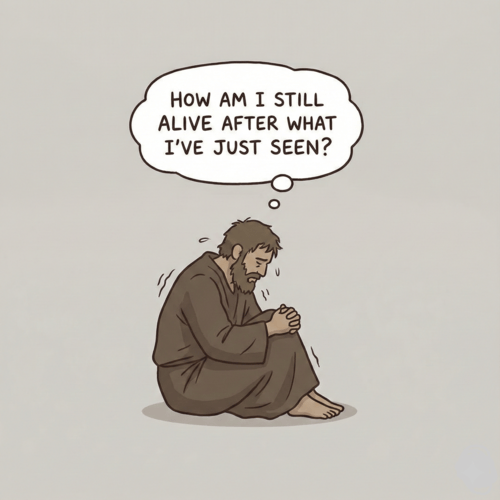
The Throne-Room Vision: Who Did Isaiah See?
The scene is unforgettable: Isaiah stands in the temple, and suddenly the veil between heaven and earth tears open. He [...]
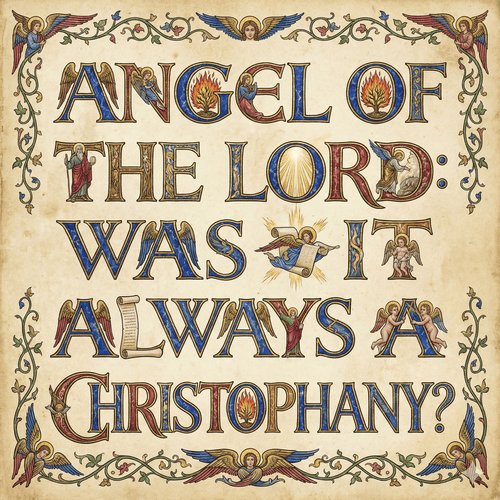
The Angel of the Lord: Can We Be Certain It Was Christ All Along?
Throughout the Old Testament, a mysterious figure appears: the Angel of the LORD. He speaks as God, bears God’s name, [...]
SUPPORT US:
Feel the Holy Spirit's gentle nudge to partner with us?
Donate Online:
Account Name: TRUTHS TO DIE FOR FOUNDATION
Account Number: 10243565459
Bank IFSC: IDFB0043391
Bank Name: IDFC FIRST BANK



